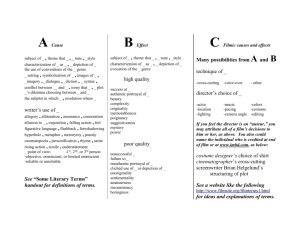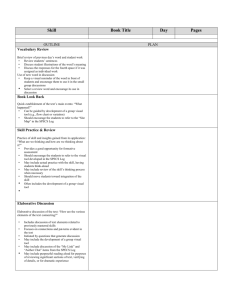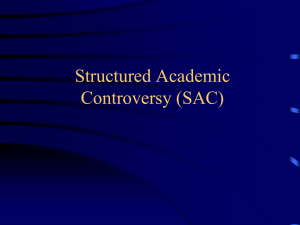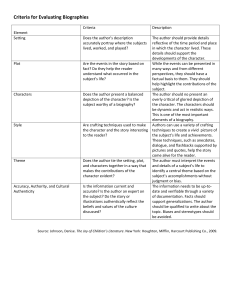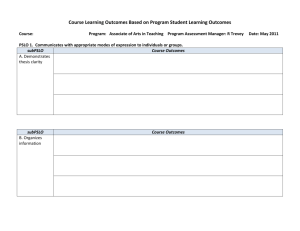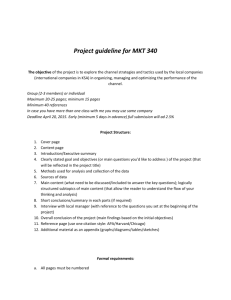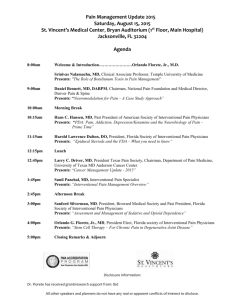Book Cover The light house overlooking waterfall represents strong
advertisement
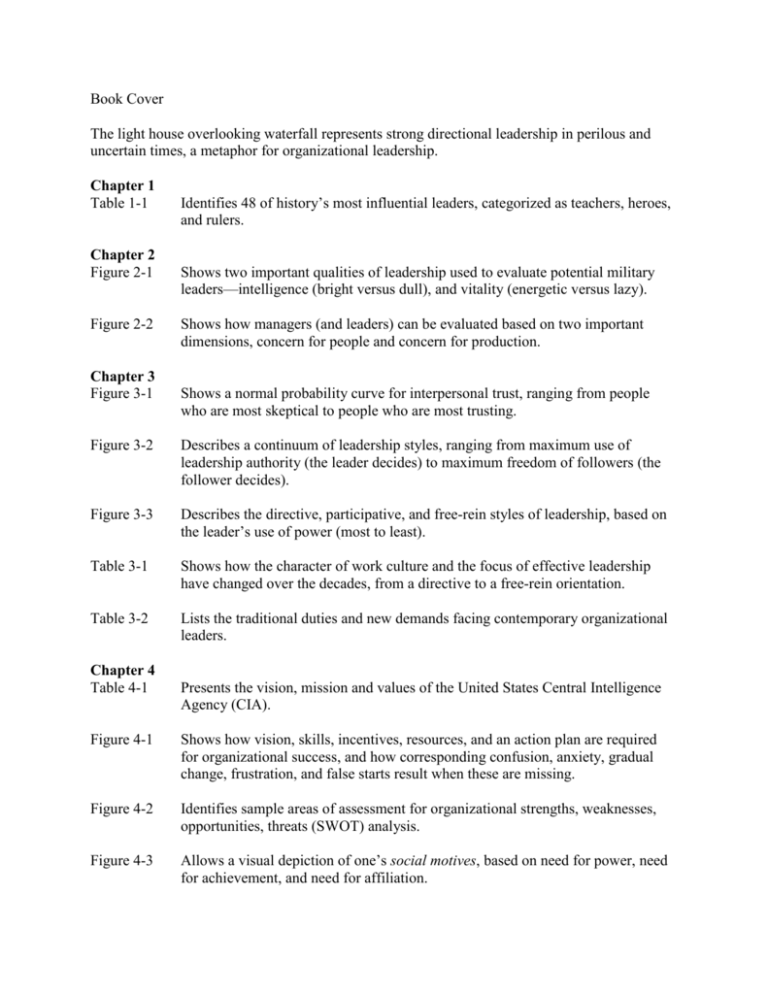
Book Cover The light house overlooking waterfall represents strong directional leadership in perilous and uncertain times, a metaphor for organizational leadership. Chapter 1 Table 1-1 Chapter 2 Figure 2-1 Figure 2-2 Chapter 3 Figure 3-1 Identifies 48 of history’s most influential leaders, categorized as teachers, heroes, and rulers. Shows two important qualities of leadership used to evaluate potential military leaders—intelligence (bright versus dull), and vitality (energetic versus lazy). Shows how managers (and leaders) can be evaluated based on two important dimensions, concern for people and concern for production. Shows a normal probability curve for interpersonal trust, ranging from people who are most skeptical to people who are most trusting. Figure 3-2 Describes a continuum of leadership styles, ranging from maximum use of leadership authority (the leader decides) to maximum freedom of followers (the follower decides). Figure 3-3 Describes the directive, participative, and free-rein styles of leadership, based on the leader’s use of power (most to least). Table 3-1 Shows how the character of work culture and the focus of effective leadership have changed over the decades, from a directive to a free-rein orientation. Table 3-2 Lists the traditional duties and new demands facing contemporary organizational leaders. Chapter 4 Table 4-1 Presents the vision, mission and values of the United States Central Intelligence Agency (CIA). Figure 4-1 Shows how vision, skills, incentives, resources, and an action plan are required for organizational success, and how corresponding confusion, anxiety, gradual change, frustration, and false starts result when these are missing. Figure 4-2 Identifies sample areas of assessment for organizational strengths, weaknesses, opportunities, threats (SWOT) analysis. Figure 4-3 Allows a visual depiction of one’s social motives, based on need for power, need for achievement, and need for affiliation. Figure 4-4 Chapter 5 Figure 5-1 Shows an example depiction of ones’ social motives. Shows how the evaluation of an organization tends to be more positive the higher one’s level of responsibility is in the organization. Chapter 6 Table 6-1 Presents three levels and six stages of moral development, based on the work of Lawrence Kohlberg. Table 6-2 Presents arguments for and arguments against stealing a drug, reflecting the six stages of moral reasoning. Chapter 7 Table 7-1 Shows how the highest level of integrity requires knowing, cherishing, declaring, acting, and acting habitually on one’s values. Figure 7-1 Allows a visual depiction of one’s personal value orientation, based on theoretical, economic, aesthetic, social, political and religious values. Figure 7-2 Shows a sample depiction of one’s personal value orientation. Figure 7-3 Shows how shared core values define and strengthen a group, and how additional individual values can enrich a group when tolerance exists. Chapter 8 Figure 8-1 Depicts the classical organizational structure in the shape of a pyramid with the flow of power going from the few executives at the top to the many workers at the bottom, and the flow of support going from the bottom to the top. Figure 8-2 Shows how the classical transfer of authority in an organization is based on the right of ownership of property, as guaranteed in the U.S. Constitution. Figure 8-3 Depicts a servant leadership philosophy represented by an upside-down pyramid, where top executives support managers and supervisors, who support front-line workers, who serve customers and clients. Figure 8-4 Shows a continuum of worker empowerment from lowest (slavery) through middle (job enrichment) to highest (Israeli Kibbutzism). Table 8-1 Presents the sources and types of power used by leaders, including four kinds of power of the position and four kinds of power of the person. Figure 8-5 Depicts the abuse of psychological bigness, resulting in poor leader-follower communication, low morale, and reduced job performance. Figure 8-6 Depicts the effective use of psychological size, resulting in good two-way communication, high morale, and increased job performance. Chapter 9 Table 9-1 Describes conditions in unempowered, out of control, and empowered workplaces, including corresponding impact on performance planning, problem solving, and setting standards. Table 9-2 Presents the actual and preferred rankings of where people go for information in organizational settings, including the top three preferences—immediate supervisor, small group meetings, and top executives. Table 9-3 Identifies 40 practical and effective steps leaders can take to develop a high performance workplace. Figure 9-1 Describes a six stage chain reaction for business success identified by W. Edwards Deming. Figure 9-2 Presents “hard” orientation and “soft” orientation people and forces that have shaped the leadership philosophy behind the quality movement. Chapter 10 Figure 10-1 Allows a visual presentation of one’s levels of morale in the four key areas of job, group, management and economics. Figure 10-2 Shows a sample depiction of one’s levels of morale at work. Figure 10-3 Shows how high challenge and high skill combine to create a positive experience of flow, in contrast to negative experiences of apathy, anxiety and boredom. Figure 10-4 Is a visual depiction showing how the human eye communicates non verbal messages. Chapter 11 Figure 11-1 Figure 11-2 Allows a visual representation of one’s problem-solving style—Charles Darwin, emphasizing inquiry and discovery; Albert Einstein, emphasizing abstract thinking and new ideas; Socrates, emphasizing creative application; and Henry Ford, emphasizing concrete action and achievement of results. Is a visual presentation of the four-step process for solving any problem—having experience, reflecting on facts, building theories, and taking action. Figure 11-3 Shows a picture of the Charles Darwin problem-solving style, emphasizing having experience and reflecting on results. Figure 11-4 Shows a picture of the Albert Einstein problem-solving style, emphasizing reflection on facts and theory building. Figure 11-5 Shows a picture of the Socrates problem-solving style, emphasizing understanding theories and putting ideas into use. Figure 11-6 Shows a picture of the Henry Ford problem-solving style, emphasizing taking action and achieving results. Figure 11-7 Shows a picture of the versatile style of problem-solving with equal emphasis on experience, reflection, theory, and application. Figure 11-8 Shows the four stages of human interaction in the life of a typical group over time, including forming, proceeding through storming and norming, and ending with performing. Table 11-1 Describes the major issue, member behavior, and effective leadership actions that are typical of the forming stage in the life of a group. Table 11-2 Describes the major issue, member behavior, and effective leadership actions that are typical of the storming stage in the life of a group. Table 11-3 Describes the major issue, member behavior, and effective leadership actions that are typical of the norming stage in the life of a group. Table 11-4 Describes the major issue, member behaviors, and effective leadership actions that are typical of the performing stage in the life of a group. Figure 11-9 Is an example of a force field analysis for a company safety program, showing the relative strength of helpful drivers and harmful barriers to success. Table 11-5 Describes the contrasting dynamics of teams on the way up to success and teams on the way down to failure. Chapter 12 Figure 12-1 Presents Abraham Maslow’s hierarchy of human needs in the shape of a pyramid with survival at the base, rising through security, belonging, and respect, and culminating with fulfillment at the top. Figure 12-2 Allows a visual depiction of one’s motivation at work, including the relative satisfaction of need for survival, security, belonging, respect, and fulfillment. Figure 12-3 Shows an example depiction of one’s motivation at work. Table 12-1 Identifies the four dimensions of emotional intelligence, including recognition of emotions in oneself and others and regulation of emotions in oneself and others. Figure 12-4 Identifies four styles of managing conflict—avoidance, accommodation, domination, and assertiveness. Chapter 13 Figure 13-1 Shows the changing demographics of the U.S. workforce between 1995 and 2050, highlighting a trend toward increasing diversity. Table 13-1 Presents examples of different social protocols in the countries of Europe, Asia, and South America. Figure 13-2 Is a pyramid showing the decreasing percentage of women versus men at each higher level of responsibility in the work force. Chapter 14 Figure 14-1 Shows the steps to follow for effective delegation. Figure 14-2 Presents John Holland’s model of job families, based on personality and occupational types—realistic, investigative, artistic, social, enterprising, and conventional. Figure 14-3 Shows the responsibilities and skills needed for top, middle, and first-level management. Figure 14-4 Shows the amount of time spent by first, middle, and top-level managers performing the four processes/functions of management—planning, organizing, directing and controlling. Figure 14-5 Highlights the turbulence encountered when first, middle and top-level managers move from doing things, to coordinating people, to thinking about ideas. Chapter 15 Table 15-1 Presents a summary of the different behavior/values of traditional, participative, and individualistic styles of interpersonal relations. Table 15-2 Describes traditional, participative and individualistic styles of interpersonal relations on such issues and subjects as strategic emphasis, core values, and leadership needs. Table 15-3 Describes the big five personality traits and their stability over time, including openness to experience, conscientiousness, extroversion, agreeableness, and neuroticism (OCEAN). Chapters 16 Figures 16-1 and 16-2 Are numbers worksheets to be used in an exercise showing the need for effective training. Table 16-1 Presents the American Society of Training and Development (ASTD) model of highly effective training, including targeted training needs and types of training provided. Table 16-2 Presents a four factor measurement of training effectiveness, including pace, relevance, value and participation. Figure 16-3 Shows a four level model of performance from novice to master, based on consciousness and competence. Chapter 17 Figure 17-1 Shows common responses to change at various organizational levels, including top executive isolation, middle management pressure, and front-line employee resistance. Figure 17-2 Describes John Kotter’s eight-stage process for leading organizational change. Figure 17-3 Identifies common leadership errors and their negative consequences in creating organizational change. Table 17-1 Presents five principles leaders should follow to empower people for successful organizational change. Figure 17-4 Shows a diffusion of innovation curve, including categories of adoption with a common tipping point between 15 and 17 percent for any idea, practice, or product to take root and grow. Figure 17-5 Highlights significant changes in U.S. Society, including technology advances, increasing diversity, globalization, and break down of traditional values. Table 17-2 Presents eight organizational changes that lead to employee stress, and eight techniques for dealing with these stressors. Figure 17-6 Shows the typical relationship between morale and time in dealing with change, including a journey through fire till accommodations are made. Figure 17-7 Shows how the pace and volume of change increase the challenge to manage morale in the modern workplace. Figure 17-8 Figure 17-9 Is a visual depiction of an attitude curve in response to change, including states of denial, resistance, negative emotions, exploration, responsibility, and commitment. Is a visual depiction of effective responses in dealing with change, including emphasis on exploration, responsibility and commitment, and avoidance of denial, resistance, and negative emotions. Figure 17-10 Shows the typical relationship between job performance and good stress, including an optimum performance zone and moderate stress level that prevent rustout and burnout conditions. Figure 17-11 Is a visual depiction of Joseph Brady’s Executive Monkey Studies. Table 17-3 Chapter 18 Table 18-1 Figure 18-1 Chapter 19 Figure 19-1 Is a script of a day in the life of a stress prone person (Mr. A) in contrast to a stress-resistant person (Mr. B), including individual actions and health and social consequences. Presents a performance review checklist, including what the supervisor and employee should do before the review, during the review, and after the review. Can be used to assess individuals on work performance and work attitude, and provide management strategies to address deficiencies. Allows a visual depiction of one’s job performance in the areas of statesmanship (working with and through others), entrepreneurship (achieving results), and innovation (generating new and usable ideas). Figure 19-2 Shows a sample depiction of one’s level of job performance. Figure 19-3 Describes a five level hierarchy of job performance, based on James Collins’ book, Good to Great. Table 19-1 Describes the paradox of Level Five Leadership, characterized by personal humility and professional will. Table 19-2 Lists the day-to-day behaviors of a high performance coach operator, to support safe, dependable, efficient and courteous transportation service. Table 19-3 Presents a four-step method for solving personnel performance problems.
